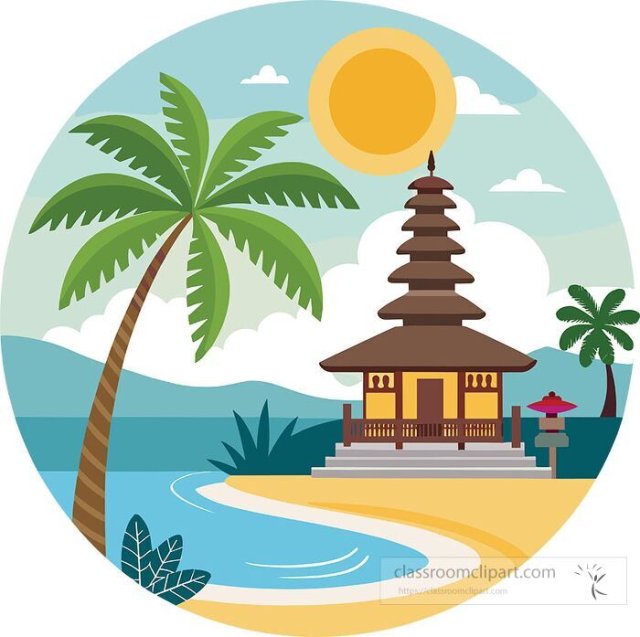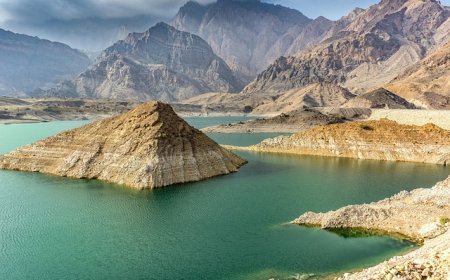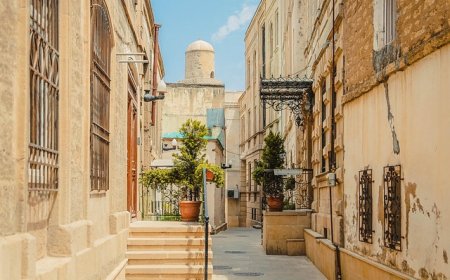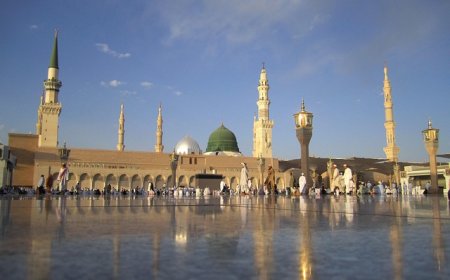Indonesia for Students: Geography, Culture, and Nature of the World’s Largest Island Country
Discover the geography, history, people, and nature of Indonesia in this student-friendly article for ages 8–16. Includes quiz, vocabulary, and national standards alignment.

Introduction
Indonesia is the world’s largest island country, made up of over 17,000 islands, and is located in Southeast Asia, stretching between the Indian and Pacific Oceans. It is a country full of rich cultures, active volcanoes, dense rainforests, and stunning beaches. With a population of over 270 million people, Indonesia is the fourth most populous country in the world and has more Muslims than any other country.
Indonesia is known for its breathtaking landscapes, diverse wildlife, colorful traditions, and friendly people. From the busy streets of Jakarta to the peaceful temples of Bali and the wild jungles of Borneo, Indonesia is a land of contrast and wonder.
Geography and Landscape
Indonesia is an archipelago, which means it is made up of many islands. Some of the most important and well-known islands include Java, Sumatra, Kalimantan (part of Borneo), Sulawesi, and Papua. The islands are surrounded by warm oceans and are covered with mountains, volcanoes, forests, and rice fields.
The country sits on the Ring of Fire, an area with many active volcanoes and frequent earthquakes. In fact, Indonesia has more active volcanoes than any other country. Some, like Mount Merapi and Mount Bromo, are well-known and often visited by tourists. Volcanoes have created fertile soil for farming but can also cause natural disasters.
Indonesia has tropical rainforests, coastal mangroves, and coral reefs. The climate is hot and humid all year round, with a rainy season and a dry season. Many areas receive heavy rainfall, especially in the rainforest regions.
Cities and Regions
Indonesia’s capital city is Jakarta, located on the island of Java. Jakarta is one of the world’s largest cities and is full of skyscrapers, traffic, street food vendors, and cultural centers. Java is also home to Yogyakarta, a city famous for traditional arts and ancient temples like Borobudur and Prambanan.
Bali is one of the most visited islands and is known for its beaches, temples, and unique Hindu culture. Tourists from all over the world come to Bali to relax, surf, and enjoy cultural performances. Other important cities include Surabaya, Medan, and Makassar, each with its own regional flavor.
Indonesia is divided into provinces, and each region has its own traditions, food, languages, and ways of life. Traveling from one island to another can feel like entering a new country, even though it's all part of the same nation.
People, Language, and Culture
Indonesia is one of the most culturally diverse countries in the world. More than 300 ethnic groups live in the country, and over 700 languages are spoken. The national language is Bahasa Indonesia, which helps unite the country. Most people also speak local languages at home and in their communities.
The majority religion is Islam, but Indonesia also has large communities of Christians, Hindus, and Buddhists. Bali is mostly Hindu, while some islands like Flores and North Sulawesi have Christian majorities. Religious holidays and traditions are important in everyday life, and people show respect for all beliefs.
Traditional music, dance, and clothing vary by region. One famous form of performance is the wayang, a shadow puppet show that tells stories from ancient legends. Batik, a method of dyeing cloth with wax patterns, is an important Indonesian art and is worn during ceremonies and celebrations.
Food and Daily Life
Indonesian food is full of flavor, often spicy, and includes rice, noodles, vegetables, chili, and spices. Every island has its own specialties. Some of the most popular dishes include nasi goreng (fried rice), satay (grilled meat skewers), rendang (spicy beef stew), and gado-gado (a salad with peanut sauce).
Meals are often shared with family or neighbors. In rural areas, people might sit on the floor to eat, while in cities, many people eat at food stalls or restaurants. Traditional snacks and sweets made with coconut, rice flour, and banana are commonly sold in markets.
In daily life, most Indonesians live in houses with open-air designs to stay cool in the heat. Students wear uniforms to school and often help with chores at home. Religion, family, and community play a big part in people’s lives. Many children also enjoy playing soccer, flying kites, or watching cartoons after school.
History of Indonesia
Indonesia’s history includes ancient kingdoms, powerful trading ports, and long periods of colonization. Thousands of years ago, people built advanced societies in places like Java and Sumatra. The Srivijaya and Majapahit empires ruled large parts of the islands and became important centers of trade, religion, and culture.
In the 1500s, European powers like Portugal and the Netherlands arrived. The Dutch eventually took control, and Indonesia became a colony called the Dutch East Indies. For more than 300 years, the Dutch ruled much of the country and used its resources.
During World War II, Indonesia was occupied by Japan. After the war, Indonesia declared independence in 1945, led by Sukarno, the country’s first president. Gaining full independence took several years of struggle, but Indonesia eventually became a republic.
Today, Indonesia is a democratic country with a growing economy, a young population, and an important voice in the global community.
Nature and Wildlife
Indonesia is one of the most biodiverse places on Earth. Its rainforests, oceans, and coral reefs are home to thousands of plant and animal species, many of which can’t be found anywhere else.
Some famous animals in Indonesia include the orangutan, found in the jungles of Borneo and Sumatra; the Komodo dragon, the world’s largest lizard; and the proboscis monkey, known for its big nose. Indonesia’s coral reefs are filled with colorful fish, sea turtles, and sharks.
The country faces challenges such as deforestation, pollution, and illegal wildlife trade, but many people and organizations are working hard to protect its environment. National parks like Tanjung Puting and Komodo National Park are helping to save endangered species and teach people about conservation.
Vocabulary List
| Word | Definition |
|---|---|
| Archipelago | A group of islands |
| Volcano | A mountain that can erupt with lava and ash |
| Batik | A way of making designs on cloth using wax and dye |
| Biodiversity | The variety of living things in one area |
| Orangutan | A large, red-haired ape native to Indonesia’s forests |
| Satay | Skewered and grilled meat served with sauce |
| Bahasa Indonesia | The official language spoken throughout Indonesia |
| Wayang | Traditional shadow puppet performances that tell stories |
👧🧒 Kid-Friendly Summary
Indonesia is a big island country in Southeast Asia with volcanoes, beaches, jungles, and animals like orangutans and Komodo dragons. People speak many languages, but most also speak Bahasa Indonesia. The food is tasty and often spicy, with rice, noodles, and grilled meat.
Indonesia has cool traditions like puppet shows and batik clothing. Each island is different, and people follow many religions, like Islam, Hinduism, and Christianity. The country is full of life, color, and amazing nature to explore!
🧠 Interactive Quiz: What Do You Know About Indonesia?
1. What is Indonesia made up of?
A) Deserts
B) Mountains
C) Islands
D) Glaciers
2. What is the capital of Indonesia?
A) Bali
B) Jakarta
C) Sumatra
D) Borneo
3. What is batik?
A) A dance
B) A spicy soup
C) A way of dyeing fabric with patterns
D) A type of animal
4. What is satay?
A) Fried rice
B) Grilled meat on sticks
C) Fruit salad
D) Coconut soup
5. What big lizard lives in Indonesia?
A) Crocodile
B) Komodo dragon
C) Iguana
D) Salamander
6. What language is spoken across Indonesia?
A) Thai
B) Javanese
C) Bahasa Indonesia
D) Dutch
7. What is a wayang show?
A) A cooking lesson
B) A shadow puppet performance
C) A sports event
D) A parade
8. What type of climate does Indonesia have?
A) Arctic
B) Dry desert
C) Tropical and humid
D) Cold and windy




















































